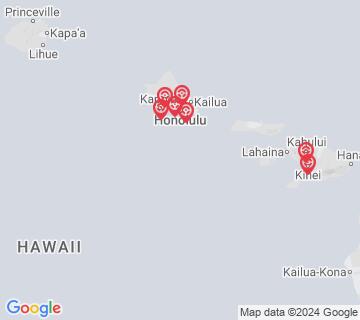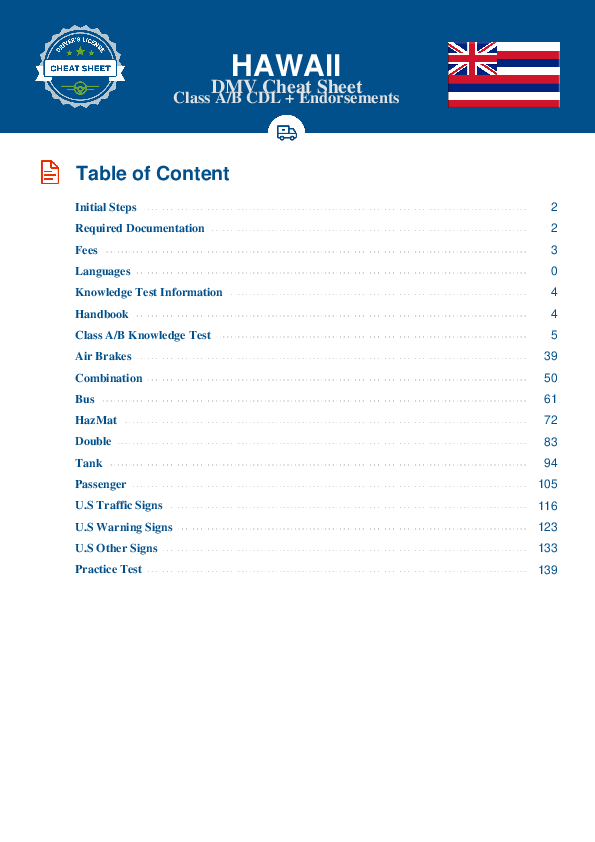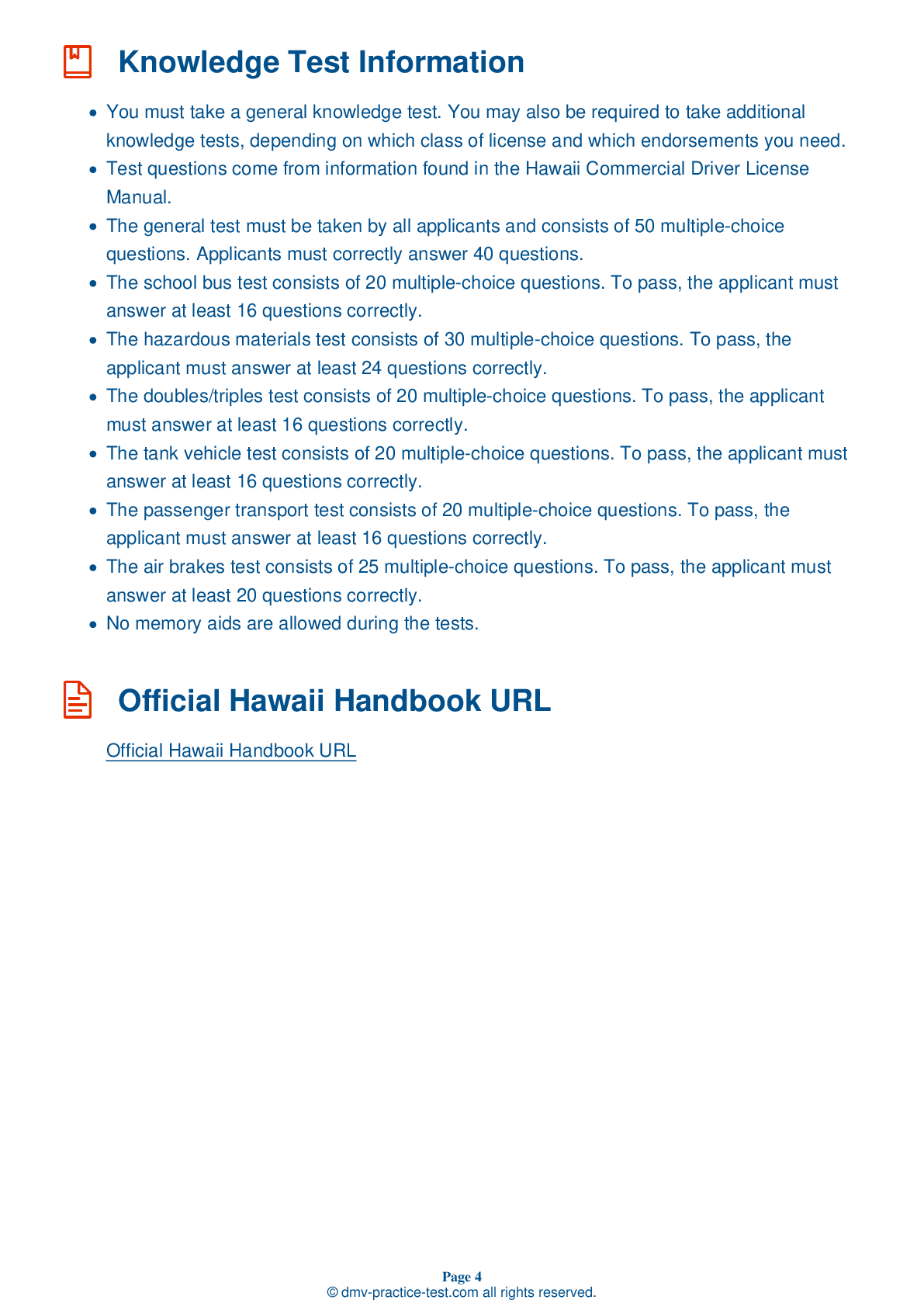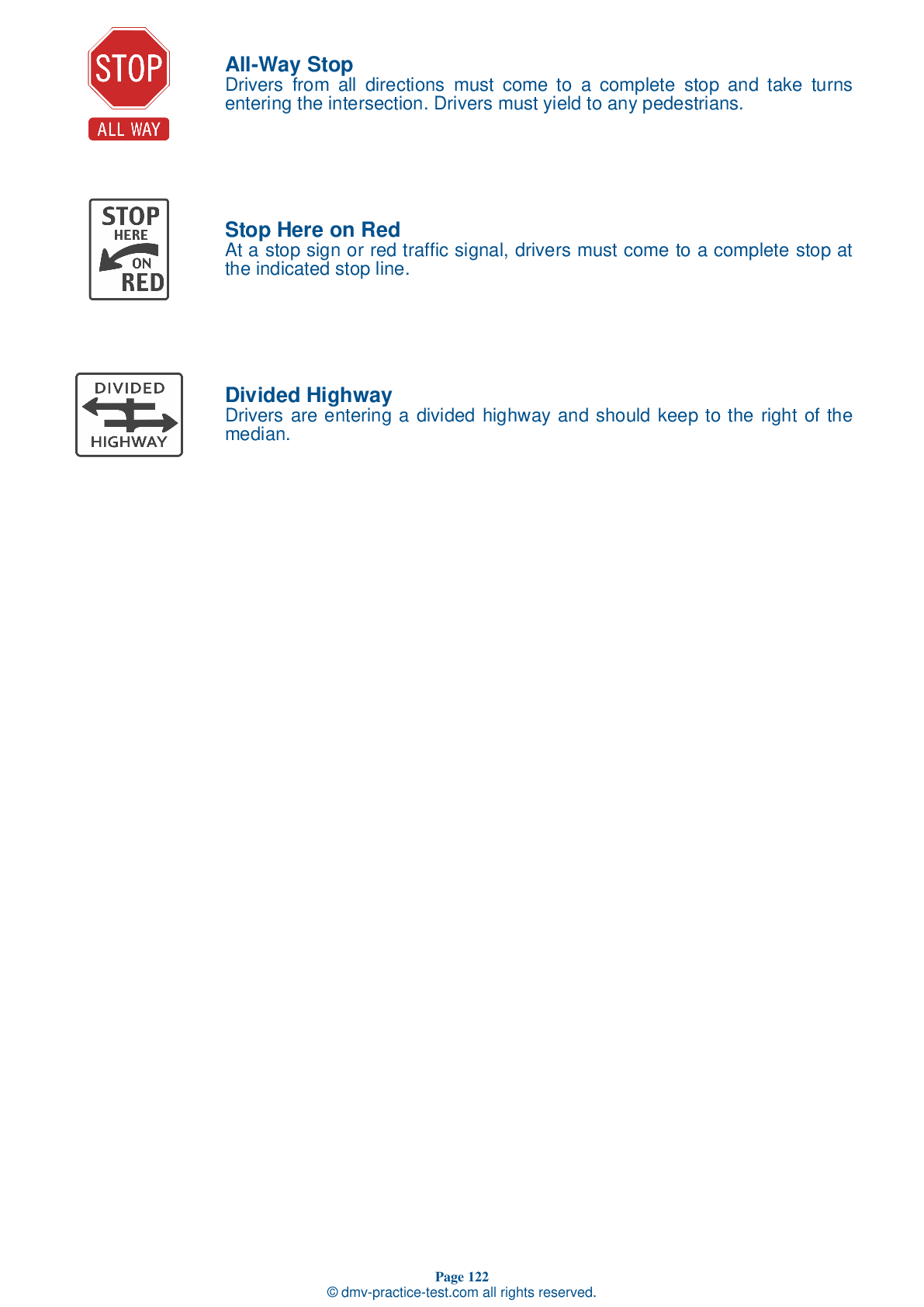Knowledge Test Class B #1
Class B Driving Test | Hawaii 2025 #1 Page 7 of 7
Train for FREE online with our Hawaii class B license test. The official exam test consists of several obligatory parts, with all of them checking your knowledge of different blocks of road rules. If you need to obtain a HI CDL class B permit in 2025, practice as much as possible. Free sample tests published on our website will help you check and improve your knowledge and boost your grades. Please bear in mind that CDL class B requirements may vary from state to state.
50
40
20
43 . If a driver has stopped on the road and is placing triangles to warn other motorists:
For your own safety, when placing reflective warning triangles, you should carry them between your body and the oncoming traffic.
44 . Black ice is:
Black ice is a layer of ice that is thin and clear enough for the road to be visible through it. The surface will look like a wet road. Always be alert to black ice if the road looks wet when the temperature is below freezing.
45 . When performing a pre-trip inspection and looking into the fifth wheel gap, you should:
When inspecting a tractor/trailer coupling, look into the fifth wheel gap and make sure the locking jaws are fully closed around the kingpin.
46 . When starting an engine:
After a vehicle is started, the warning lights and buzzers should go out after a few seconds. If the warning signals do not turn off, there may be something wrong with the vehicle.
47 . When loading a trailer, it is important to:
When loading cargo, it is important that the weight placed on each axle is neither too little nor too much. Inappropriate loading can interfere with steering, create inadequate wheel traction, or damage the axles.
48 . You should ____ if the low pressure warning signal activates while you are driving.
If the low pressure warning signal activates while you are driving, it is important that you safely exit the roadway as soon as possible and park your vehicle. If the air pressure gets too low, the brakes will no longer work well enough for you to stop safely.
49 . You should check and adjust your mirrors:
Be sure to check your mirrors before beginning a drive. Your posture may change day to day and your mirrors may need to be adjusted.
50 . A fatigued driver:
Fatigued drivers are slower to see or react to hazards than drivers who are not fatigued. Drivers are impaired in their ability to make critical decisions when they are driving drowsy.
Search the best driving school in your neighbourhood
2025 Hawaii | Frequently Asked Questions
To secure a CDL Bus endorsement in Hawaii, you must first hold a valid Commercial Driver's License (CDL). Then, pass the Passenger Transport Test and the School Bus Endorsement Test. You must also complete a school bus driver's training course and undergo a physical examination. Lastly, you need to pass a background check and have a clean driving record.
To obtain a CDL Bus license, you need to have a valid commercial driver's license (CDL). Then, pass the Passenger Vehicles written test and a skills test in the type of bus you plan to drive. You may also need to complete a bus-specific training course. Contact your local DMV for specific requirements in your state.
Yes, specific training is required for a CDL Bus endorsement in Hawaii. You must pass the Passenger Transport Test and the School Bus Endorsement Test. Additionally, a school bus driver's training course is mandatory. These ensure you have the necessary skills and knowledge to operate a bus safely.
CDL Bus licenses fall under three main classifications in Hawaii: Class A, B, and C. Class A is for vehicles with a combined weight over 26,001 lbs where the towed vehicle is over 10,000 lbs. Class B is for single vehicles over 26,001 lbs. Class C is for vehicles carrying 16 or more passengers (including the driver) or hazardous materials.
No, you cannot use your personal vehicle for the CDL Bus driving test. The vehicle used for the test must match the class and type of vehicle you plan to drive with your CDL. For a bus endorsement, you would need to take the test in a commercial bus. This ensures you can handle the specific demands and characteristics of driving a bus.
The CDL Bus driving test evaluates several skills. These include pre-trip vehicle inspection, basic vehicle control (backing, turning, and stopping), and on-road driving. On-road driving includes navigating through intersections, railway crossings, curves, and various types of roadways. You'll also be evaluated on how you manage pedestrian traffic and use of mirrors. The test ensures you can safely operate a bus under various conditions.
Yes, to obtain a CDL Bus endorsement in Hawaii, you must pass a Department of Transportation (DOT) physical examination every two years. This exam assesses your general health, vision, hearing, and mental acuity to ensure you can safely operate a commercial vehicle. It's also necessary to disclose any medical conditions that might affect your driving ability.
No, it's not permissible. In Hawaii, any driver intending to transport 16 or more passengers, including the driver, must have a valid Commercial Driver's License (CDL) with a Passenger (P) endorsement. Driving a bus without such an endorsement is against the law and may result in fines, license suspension, or even jail time.
You can add a CDL Bus endorsement to your existing Commercial Driver's License. However, you'll need to pass the Passenger Vehicles endorsement test and possibly a skills test in the vehicle you wish to operate. It's not a completely new application, but these additional tests are necessary to ensure you can safely transport passengers.
Yes, there are restrictions. Drivers with a CDL Bus endorsement must pass regular physical examinations and maintain a clean driving record. They are also subject to random drug and alcohol testing. Furthermore, they must comply with hours-of-service regulations to prevent fatigue-related accidents. Drivers under 21 are restricted to intrastate operation only. Violating these regulations can lead to the loss of the endorsement.




